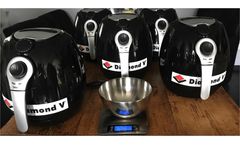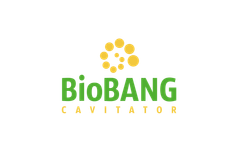Grass Silage Articles & Analysis
18 articles found
This limits the types of forage crops that can be reliably grown and harvested for silage. While many U.S. dairies rely heavily on corn silage, Canadian dairies often depend on legume- grass silage mixes, barley silage, or triticale that are better suited to cooler climates and earlier cuts. ...
Coryniformis Si3, isolated from grass silage, was able to inhibit the growth of a great number of mycotoxinogenic moulds includingAspergillus fumigatus and Aspergillus nidulans, Penicillium roqueforti, Fusarium poae, F. graminearum, F. culmorum and Fusarium sporotrichioides(Magnusson & Schnürer, 2001). ...
Mg absorption occurred prior to the small intestine in cows and steers fed grass hay or silage diets (Khorasani & Armstrong, 1992). They found that net Mg absorption occurred also in the small intestine and both net absorption and secretion in the large intestine. ...
Measuring Dry Matter Accurately On-Farm With an Affordable Consumer Appliance When assessing the health and productivity of your dairy herd, dry matter intake (DMI) is one of the key data points to consider. If DMI is low, productivity suffers no matter the quality of the ration. Moreover, with low DMI, maintaining cow health becomes that much more ...
Plant’s power: 500 kW/h Daily Feeding: Grass silage, Maize silage, Chicken manure, Maize meal feed, Cow slurry Goal: replace the most expensive biomass (silage and corn flour), increasing the amount of grass silage and improving the viscosity into digesters To see video, please click ...
Plant’s power: 800 kW/h Daily feeding: horse manure with straw, grass silage, corn silage Goal: to increase the gas production and reduce the viscosity To see video, please click ...
Plant power: 500 kW/h Daily Feeding: Corn silage, cattle manure with straw, grass silage Goal: Increase fiber digestibility to replace corn with manure, straw and grass, to optimize feeding costs To see video, please click ...
Plant’s Power: 2000 kW/h Daily Feeding: Chicken manure; Corn silage; Grass silage; Horse manure; cattle slurry; GPS; Cattle Manure Goal: First startup of BioBANG on the biogas plant Read more To see video, please click here ...
Plant’s power: 3000 kW/h Daily Feeding: whole Cereal silage, grass silage, OFMSW and pig slurry Goal: to improve the viscosity into digesters and to concentrate the DM % into digesters To see video, please click ...
Plant’s power: 500 kW/h Daily Feeding: Grass silage, Maize silage, Chicken manure, Maize meal feed, Cow slurry Goal: Increase the digestibility of grass silage, reduce the amount of silage and corn flour and improve the viscosity in digesters To see video, please click ...
Plant’s power: 1000 kW/h Daily Feeding: grass silage, wholecrop cereals, wholecrop maize, chicken litter Goal: we would consider broadening the scope of feedstocks (farm crops and manures) as and when they become available so the system will need a certain amount of flexibility To see video, please click ...
Plant’s power: 1000 kW/h Daily feeding: corn silage, horse manure, grass Silage Goal: Optimize the cost of the daily feeding, reducing the quantity of corn silage and increasing the amount of grass silage and horse manure To see video, please click ...
First silage cut is essential for farmers as this cut will provide forage stock for the winter. Although nitrogen is essential to ensure the yield, other elements have to be watched closely, especially phosphorus (P). ...
This plant produces 900 Nm3/h of biogas and is fed with about 90 t/day of products composed by cattle manure, horse manure, corn silage, triticale silage, grass silage and poultry ...
Location: Stowell Farms, Wiltshire (England) Capacity: 499 kWel Input materials: Manure, grass and maize silage, feed remains Features: Processes the slurry of 500 herds of cattle into high-quality fertilisers. ...
If you’re seeing darker, black layers in the silage, it can mean excess nitrogen was present in the grass at harvest. ...
Livestock farmers spreading slurry onto fields after first-cut grass silage face heightened risks of contamination after this year’s early start to the season, a silage specialist is warning, especially if following the current trend to more frequent silage cutting.The risks of spreading slurry after first ...
Around 10,500 tonnes of farm generated material is produced per annum. Materials include maize and grass silage, poultry litter, cattle manure, sugar beet and potatoes, all of which is utilised to feed the AD process. ...








